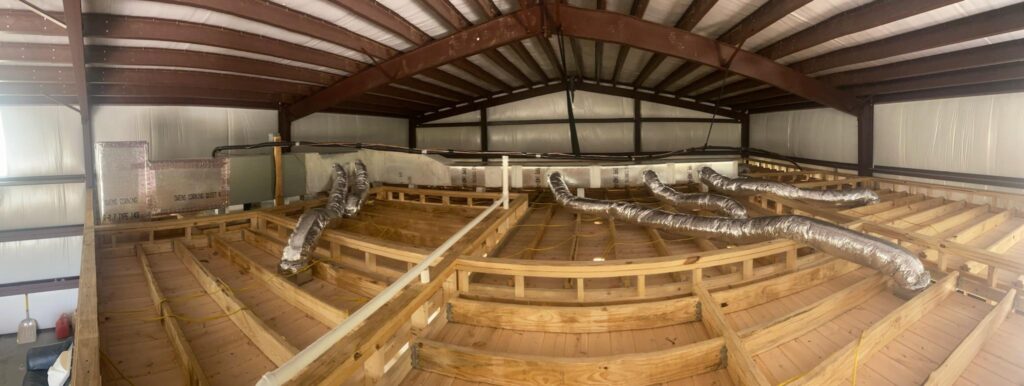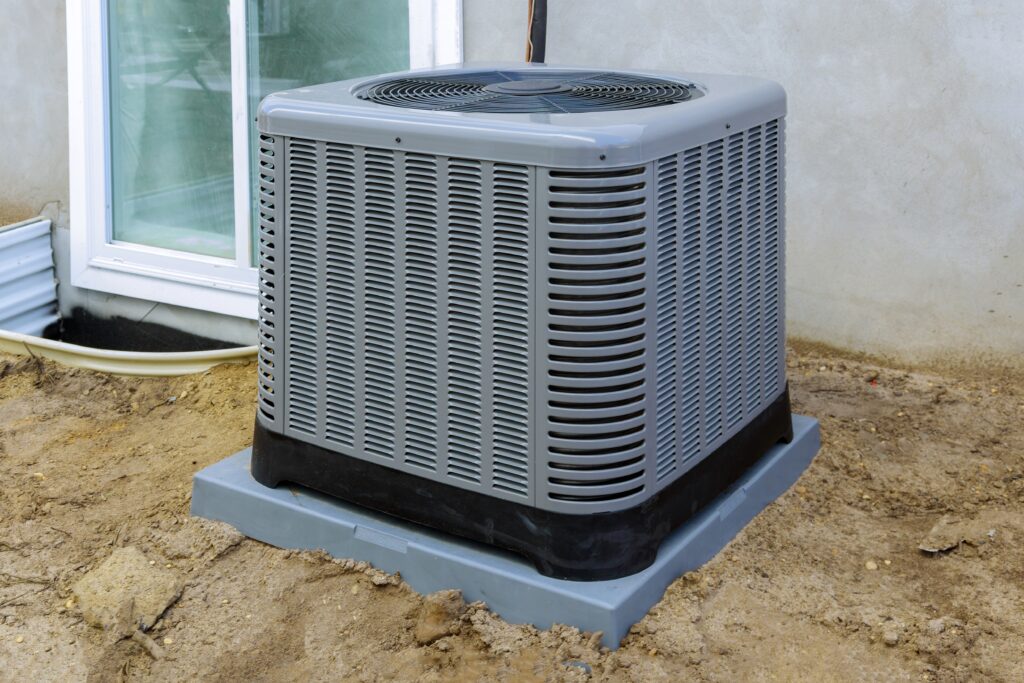Best HVAC Features for Newly Built Homes
Building a new home is one of the most exciting and rewarding experiences in life. It is a blank slate, a rare opportunity to create a living space that is a perfect reflection of your family’s lifestyle, needs, and aesthetic vision. You will spend countless hours making decisions about flooring, countertops, paint colors, and fixtures; the tangible, visible elements that turn a house into a home. During this exciting process, it is all too easy to overlook the “unseen” systems that work silently behind the walls. Of all these, none will have a greater impact on your home’s long-term comfort, monthly energy bills, and overall health than your heating, ventilation, and air conditioning (HVAC) system.
The construction phase is your one and only opportunity to design and install a truly high-performance home comfort system in the most seamless and cost-effective way possible. Settling for a basic, builder-grade package is a missed opportunity that can lead to years of high bills and comfort compromises. For those building a new home here on the Alabama Gulf Coast, it is essential to select features that are not only efficient but are also specifically designed to handle our unique and demanding coastal climate of intense heat, extreme humidity, and corrosive salt air.
A Professional Load Calculation and Ductwork Design
Before you can even begin to choose your equipment, the most critical step in designing an effective HVAC system must take place: a professional and detailed analysis of your new home’s plans. The performance of your entire system rests on this foundational step, and it is something that should never be approximated with rules of thumb or guesswork.
This process begins with a Manual J load calculation. This is the industry-standard protocol for determining the precise amount of heating and cooling a specific home requires to stay comfortable. A certified HVAC designer will perform a detailed analysis of your architectural plans, taking into account every factor that affects your home’s thermal performance. This includes the total square footage, ceiling heights, the number and size of windows, the quality and U-factor of those windows, the orientation of your home to the sun, the R-value of your insulation, and the expected air tightness of the new construction. This scientific approach is the only way to determine the exact size, or tonnage, of the air conditioner your home will need.
Once the load calculation is complete, the next step is a Manual D ductwork design. Your duct system is the delivery network, and it must be custom-designed to work in harmony with your equipment. This process engineers the entire duct system, from the size of the main trunk lines to the length and diameter of the runs to each room, ensuring that the correct volume of conditioned air is delivered quietly and efficiently to every single vent. Starting with a professional design is the absolute key to avoiding future problems like hot and cold spots, noisy operation, and poor efficiency.
Don’t forget that ducts need to be cleaned every few years! Click here to learn more.
Variable-Speed and Multi-Stage Equipment
The heart of any modern, high-performance HVAC system is its compressor. The technology inside this component will have the biggest impact on your energy bills and your day-to-day comfort. The old standard was a single-stage system, which operates on an all-or-nothing principle: it is either running at 100% capacity or it is off. A significant upgrade is a two-stage system, which can run at a lower, more efficient speed (typically around 60-70% capacity) for most of the time, only ramping up to full power on the hottest days.
The pinnacle of modern comfort and efficiency, however, is a system with a variable-speed inverter-driven compressor. This advanced technology allows the HVAC system to modulate its output in tiny increments, often running for very long, continuous cycles at extremely low power levels to perfectly match your home’s cooling needs at any given moment.
The single greatest benefit of this technology for a home on the Gulf Coast is its profound ability to control humidity. Dehumidification is a process that requires long, steady run times. The short, powerful blasts of a single-stage system will cool the air but will not run long enough to effectively remove the sticky, uncomfortable moisture from our air. Because a variable-speed system runs for much longer, more continuous cycles, it is dramatically better at pulling this humidity out of your home. This creates a far more comfortable, crisp, and healthy indoor environment, often allowing you to feel more comfortable even at a higher thermostat setting.
Corrosion-Resistant Technology
The beautiful, salty air of Gulf Shores is a relentless and destructive force for standard HVAC equipment. The microscopic salt particles and constant moisture create a highly corrosive environment that can cause a typical outdoor unit to fail in a fraction of its expected lifespan. For any new home being built on our coast, choosing equipment with corrosion-resistant technology is not a luxury upgrade; it is an absolute necessity for protecting your investment.
Leading HVAC manufacturers produce specific product lines that are purpose-built for coastal environments. These units are engineered from the ground up to combat the effects of salt air. Their most critical feature is a corrosion-resistant coil, often made from all-aluminum or with a specialized coating that prevents the destructive galvanic corrosion that occurs between the copper and aluminum in a standard coil.
These coastal systems also feature other durable components, such as a rust-proof composite base pan instead of a standard steel one, and fasteners and screws that are specially coated to resist rust. The painted steel cabinets themselves are often finished with a more advanced, durable paint that has undergone thousands of hours of rigorous salt spray testing to ensure its longevity. While a coastal-rated unit may have a higher upfront cost, its ability to withstand our harsh environment makes it a far more cost-effective choice in the long run.
Need an HVAC unit installed at your new property? Learn more about our heat pumps.
Smart Thermostats and Zoning
A high-performance HVAC system needs a high-performance control system to unlock its full potential. A new home should be equipped with a modern smart thermostat that does more than just control the temperature.

Look for a high-end smart thermostat that also has a built-in humidistat. This will allow you to precisely control your home’s indoor humidity level, a critical factor for comfort on the Gulf Coast. These Wi-Fi enabled thermostats provide the convenience of remote control from a smartphone app, and many feature advanced capabilities like geofencing, which automatically saves energy when you are away.
For larger or multi-story new homes, an HVAC zoning system is a must-have feature. A zoning system uses multiple thermostats and a series of automated dampers within the ductwork to divide your home into distinct comfort zones. This allows you to set a different temperature for the upstairs than you do for the downstairs, or to keep your master suite cooler than the rest of the house at night. This not only solves the common problem of an uncomfortably hot upstairs in the summer, but it also provides a significant energy savings by not conditioning unused areas of your home.
Advanced Indoor Air Quality Features
Modern homes are built to be extremely airtight to maximize energy efficiency. While this is great for your power bill, it can also trap indoor air pollutants, such as allergens, dust, and volatile organic compounds (VOCs). A modern HVAC system should be designed from the start to provide excellent indoor air quality.
The foundation of this is superior filtration. Rather than a standard one-inch filter, a new high-performance home should be designed with a 4- or 5-inch media filter cabinet. This allows for the use of a high-MERV filter that can capture a much higher percentage of microscopic allergens and dust particles without restricting the system’s airflow.
While a variable-speed system provides excellent dehumidification, a dedicated whole-home dehumidifier offers the ultimate level of moisture control. This can be integrated directly with your HVAC system to maintain the perfect humidity level, which is the key to preventing the growth of mold and mildew in our coastal climate. Finally, an ultraviolet (UV) air sanitizer can be installed within the indoor unit to sterilize the coil, preventing the growth of bacteria and other biological contaminants.
Want better air quality? Click here to learn more about our air purification services!
The new construction phase is your one and only opportunity to build the perfect home comfort system from the ground up, seamlessly and cost-effectively. The decisions you make about your HVAC system will have a lasting impact on your family’s comfort, health, and finances for decades to come. By prioritizing a professional design, high-efficiency equipment, corrosion-resistant technology, and advanced air quality features, you can create a home that truly performs.
It is essential to involve a qualified HVAC expert early in your home’s design process. If you are building a new home in Gulf Shores, Orange Beach, or the surrounding coastal communities, we encourage you to contact the experts at Wynn Creek AC. Let us partner with you and your builder to design and install the perfect, high-performance comfort system for your dream home.


